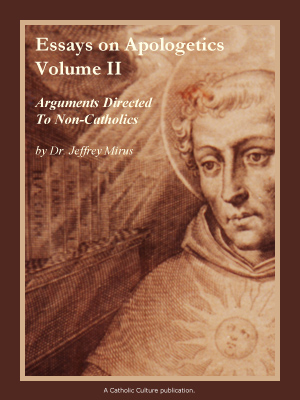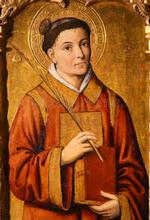Subscribe for free today!
Get newsletters with the latest content, and access to exclusive ebooks and podcast episodes.
Already subscribed? Log in to stop seeing invitations to subscribe.
Catholic Recipe: Pirogs
INGREDIENTS
- 2 cups pastry flour, sifted
- 1/2 teaspoon salt
- 2/3 cup vegetable shortening
- 1/3 cup ice water (approximately)
- Ham and Chicken Filling or Ginger Pecan Filling (see recipe) or other optional fillings, such as fruit, jams, preserves, other meat fillings
- 1 egg yolk beaten with 1 tsp. water
Details
Prep Time: 4 hours
Difficulty: ★★☆☆
Cost: ★★☆☆
For Ages: 11+
Origin: Russia
showFood Categories (3)
showOften Made With (3)
showLinked Activities (1)
showFeasts (2)
Also Called: Piroski
Wherever two or three Russians gather to eat-in London, Paris, Helsinki, or New York-there are pirogs (or piroski), delicious little pastries filled with meat or fish and served with bowls of steaming soup.
For centuries pirogs have played a dramatic role in Russian daily life. They appeared on the tables of princes, and were served at feasts of mourning and anniversaries of joy. The rich distributed them as alms, with prayers for the peace of departed souls. Even today, when traditions of the past are largely forgotten, pirogs continue to be a favorite treat. Soviet children have an amusing pirog action song which they pantomime line by line, with exciting detail:
"Baba sat on the peas jump! Jump! The ceiling tumbled down, jump! jump! Baba walked, walked, walked, She found a pirojok, She sat down and ate, ate, ate. Then she walked away ...."
Old records frequently mention pirogs among foods of the seventeenth-century Russian nobility. One account lists various dishes that Prince Morozov had prepared for his banquet table on February 14, 1656. There were pirogs with fish, pirogs with sauerkraut, and long pirogs served with beans, cheese cakes, and carp. Another food memorandum about the same period speaks of pirogs with mushrooms and eggs and directs that fifteen extra pastries be made for the poor. Until the mid-nineteenth century pirogs were traditional in Russian funeral rites. One of the pastries-a small one-was carried from the home of the deceased and later divided among the clergy. Following the services, relatives and friends returned to partake of the funeral feast and offer prayers for the dead man's soul. At the end of the meal a great pirog, surrounded by lighted tapers, was brought to table, not for guests to eat but for distribution among the beggars at the gate.
Before the Revolution pirogs were essential to Russian nameday celebrations. These festive cakes were enormous. They consisted of sweetened dough, with fillings of various kinds. Relatives at a distance often received plain pastries in token of affection.
In some places it was customary to break the name-day pirog over the head of the person who was feted. With this symbolic scattering of riches, guests made the wish, "May gold and silver fall in showers throughout the remaining years of life." Then as the pirog was apportioned, each person made a toast and offered congratulations.
Today, as in Old Russia, pirogs may be made in a number of ways, to suit the occasion. Use puff paste or sweetened or plain pastry. Puff paste filled with mixed apples and raisins, or with strawberry jam, or nut and apricot conserve, make a delicious dessert, or a welcome supplement to coffee or tea. Rich piecrust pirogs, filled with minced turkey or chicken, are perfect with salads, while lamb, beef, or ham pirogs add originality to the soup course.
Pirogs made with this pastry may have any desired filling.
DIRECTIONS
Mix together the flour and salt. Work in shortening with pastry blender or tines of fork until shortening is distributed in pieces about the size of a pea. Stir in water, using fork to stir. Pat dough into ball and chill.
Roll out pastry thinly between two sheets of heavy waxed paper, and cut into pairs of 2-inch rounds. Place on one round a spoonful of filling, moistened with gravy. Moisten edge of bottom pastry round with water. Place the other round on top. Seal edges with fork tines and prick top. Glaze by brushing with mixture of 1 egg yolk beaten with 1 teaspoon water.
Bake in moderately hot oven (375? F.) about 20 minutes. Serve hot with soup or salad.
Recipe Source: Feast-Day Cakes from Many Lands by Dorothy Gladys Spicer, Holt, Rinehart and Winston, 1960Fri26 DecemberChristmasFeast of St. Stephen, First Martyr
Free eBook:

Free eBook: Essays in Apologetics, Vol. II Copyright © 2025 Trinity Communications. All rights reserved.





